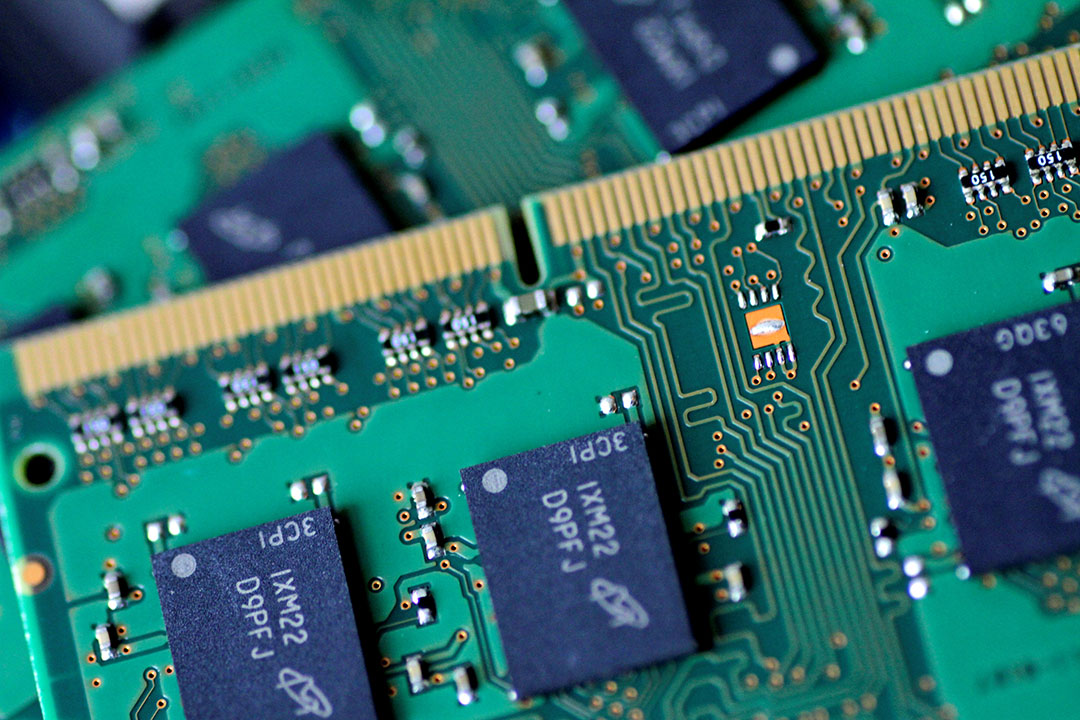
PHL deemed ‘bystander in US trade wars, chipmakers urged to diversify markets

By Aubrey Rose A. Inosante, Reporter
THE Philippine chip industry is a peripheral player in the trade wars the US appears to be heading into, and must not take sides while taking care to diversify its markets, analysts said.
“At this point, the Philippines is considered a bystander economy in the brewing trade wars. In the short run, the Philippines, together with the rest of its ASEAN peers, should refrain from directly participating in trade conflicts,” Adrian R. Mendoza, assistant professor at the University of the Philippines School of Economics, said.
US President Donald Trump said on Feb. 19 that he will impose tariffs on semiconductors and pharmaceutical imports starting at 25% over the course of the year.
He also announced plans to adopt reciprocal tariffs on countries that tax US imports, as well as an additional 10% levy on Chinese goods.
Mr. Mendoza said in an email that “another medium-run risk-spreading strategy” for the government is to advocate for greater diversification in export markets.
“In a worst-case scenario where Trump imposes tariffs on all imported semiconductors regardless of source, the risk exposure of Philippine exports is larger, given that, electronics take up more than half of Philippine exports,” Mr. Mendoza said.
The chip industry is deeply integrated with supply chains in Singapore, China, Taiwan, and Japan, and will be significantly affected in the worst case.
In 2024, electronics exports fell 6.7% to $39.08 billion due to soft global demand. Semiconductor shipments fell 13.5% to $29.16 billion.
Overall, merchandise exports declined 0.5% to $73.21 billion, well short of the government’s 4% growth projection.
Mr. Mendoza also highlighted the potential for heightened economic losses if countries targeted by US tariffs retaliate.
Philip Arnold P. Tuaño, Dean of the Ateneo School of Government, proposed that the Philippines weight its exports more towards the European Union, Japan, Australia, and China.
The US remained the top destination for Philippine-made goods with exports valued at $12.12 billion or 16.8% of the total in 2024.
This was followed by Japan ($10.33 billion), Hong Kong ($9.60 billion), China ($9.44 billion), Thailand ($2.96 billion), and Singapore ($2.94 billion).
Jonathan L. Ravelas, senior adviser at Reyes Tacandong & Co., warned that the proposed tariffs could raise the cost for Philippine exports, reducing their competitiveness in the US market.
“To mitigate this, the Philippine government might negotiate trade agreements, offer subsidies, and explore alternative markets. Strengthening industries and investing in innovation could also help buffer the impact,” he said.
Next to electronics, the top Philippine export commodities in 2024 were other manufactured goods ($4.66 billion), machinery and transport equipment ($2.65 billion), ignition wiring sets and other wiring sets used in vehicles, aircraft and ships ($2.45 billion) and coconut oil ($2.19 billion).
Joseph P. Purugganan, convenor of Trade Justice Pilipinas the Philippines, which specializes in low-value segments of the chip supply chain like assembly, testing and packaging, could feel the impact of the tariffs from multiple directions – from the US itself, and from buyers of Philippine products whose own exports to the US experience slowdowns.
Citing US-China trade disputes in 2018 and 2019, Mr. Mendoza said there was a missed oppotunity to step in as an alterative supplier, adding that at the time, the Philippines was deemed to have as good a chance as Vietnam to fill the vacuum.
“While Vietnam benefited from the relocation of big multinationals from China, the Philippines seemed unprepared to reap the same benefits due to fundamental weaknesses underlying domestic industrial capacity,” he said.
He cited high production costs, expensive labor and electricity, and elevated transaction costs due to weak spots like logistics, broadband infrastructure, internet speed, and ease of doing business.



